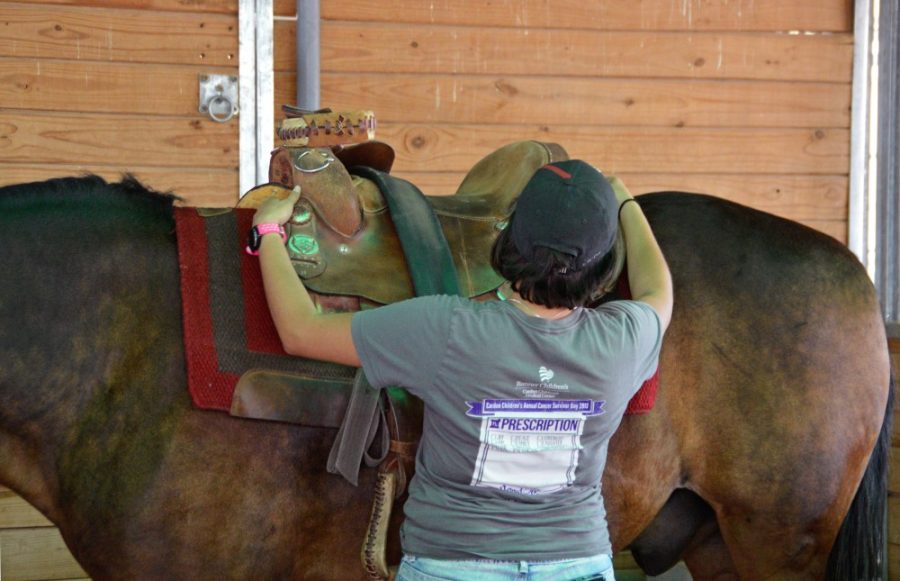The University of Arizona has lived up to its claims of a very diverse student population this semester, as the College of Agricultural and Life Sciences enrolled a group of 11 young horses.
Kacee Richardson, Equine Center manager, said that the horses are bred at the UA Equine Center, on Campbell Avenue, where animal science students get to be part of the entire breeding process.
“The broodmares get bred every spring, and the mare’s gestational length is about 342-344 days — about 11 months — so we have new foals every year,” Richardson said.
Norielle Ziemann, a senior in the equine program, has worked with three of the horses, Misa, Knockout and Maverick.
RELATED: Column: The ‘major’ struggle with finding your dream path
“Sometimes the horses want to be playful, so we have to teach them not to bite us when they want to have fun with us,” Ziemann said.
Ziemann said the foals are surprisingly friendly with humans. Since horses are prey animals it would be expected of them to fear humans, but the staff and students in the Equine Center have taught them otherwise.
“That is why it is critical for the first few hours of birth to show love to them to be familiarized with us,” she said.
According to Richardson, the Equine Center has the means to raise and train the foals with Weanling Training and Management classes, where students ibegin building the foundational training for the foals bred and raised there.

“The horses are for students to gain hands-on experience working with horses,” he said. “The students run their own show and sale barn, and will show horses to clients and develop marketing tools to promote the horses they are selling.”
According to Richardson, the money earned from selling the horses goes directly to the Equine Center. This acts as a form of funding to provide the farm with feeding and training equipment for the horses.
“At the program they show us certain techniques that work on each horse and how there are different personalities to them,” said Megan Hanson, a junior in the equine program. “You cannot work with one horse and expect a different result, they are just like people.”
RELATED: Lions and tigers and bears: UA offers new zoo and aquarium conservation certificate
The program has looked for other ways for the horses to be more involved in the community. These horses can establish new relationships with other humans through therapy.
“We have talked about having a therapeutic program using the horses to help people,” said Hanson. “The manager has talked about doing an internship called TROT [Therapeutic Riding of Tucson].”
Richardson said they’re currently looking at ways to grow the program and increase opportunities to work with the horses.
“We are in a very unique position to grow the program. We have big dreams of what we would like our students to do with these Arabian horses,” Richardson said. “We would like the students to train them to be ridden and actually travel to shows with the horses.”

According to Ziemann, the breeding process for these Arabian horses is done mostly by artificial insemination, in which horse semen is frozen and then reheated to get the mares pregnant.
This isn’t the first time Equine bred horses at its barns. The program has a history of breeding. According to Richardson, in the 1980s the Equine Sciences program was built from the ground up.
“In the late 1990s, it was further grown into the program it is now, with its focus on breeding thoroughbred race-horse prospects,” he said.
Follow Victor Garcia on Twitter









